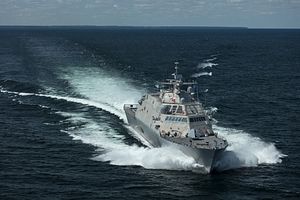Over the past month, the Trump administration has stepped up its trade war with China, with uncertain results thus far. But the scope of the war has increased, from a tight focus on the appropriation of high technology to broader trade concerns. Could it expand even farther, to other policy arenas?
As David Stanton and Wenquing Zhao argue, the Trump administration has (in somewhat clumsy fashion) linked its case against high technology espionage with its more general anxiety about America’s trade deficit with China. At issue now is not simply espionage, but the broader principles of trade across the Pacific. U.S. President Donald Trump has repeatedly complained about the size of the U.S.-China trade deficit, to good rhetorical effect with his base but thus far to only limited policy impact. This has served to unite, however uneasily, constituencies interested in the security of cutting edge technology with Trump’s more general protectionist supporters. Indeed, the union of these constituencies may be more important to Trump than the achievement of any real gains against China.
Moreover, as Robert Williams has argued, the Trump administration has taken an increasingly statist approach to trade and investment in high technology, potentially making its critique of Chinese policy ring hollow. Of course, the national security state has always taken an interest in technology, and has used a variety of tools to manage the innovation, access, and diffusion of high end capabilities. But the Trump administration seems to be taking the use of the tools to a new level, at least compared with several previous administrations.
But, of course, trade is not the only source of tension between Washington and Beijing. China continues to expand its presence in the South China Sea (Patrick Cronin and Hunter Stirges term China’s activity a “maritime insurgency”), and the United States has yet to arrive at an effective deterrent strategy. There appear to be few good options for the United States in the South China Sea; it has no desire to engage in military conflict against China, and few tools that are terribly useful in slowing Chinese expansion.
Could the Trump administration successfully link trade war with active steps against China’s encroachment upon the South China Sea? Would it try? Trump has thus far sent mixed signals on the South China Sea, and administration policy may depend more on infighting among his advisers than any strong conviction on the part of the president himself. Nevertheless, the president has evinced a tendency to link trade and security issues in the past, and might well be convinced to attempt to press China on the South China Sea, in combination with the more relevant trade issues.
To be sure, this solution probably won’t work. Pressure in one area rarely results in concessions in another, and fundamentally Americans care much more about trade than they do about the South China Sea. Still, it’s hardly inconceivable that the Trump administration might think along these terms. And as of yet, we don’t have a firm grip on the relative importance that Beijing puts on trade relations versus South China Sea expansion. In any case, this ladder may still have some more escalatory rungs.
The views expressed are those of the author and do not necessarily reflect the official policy or position of the Department of the Army, Department of Defense, or the U.S. Government.

































